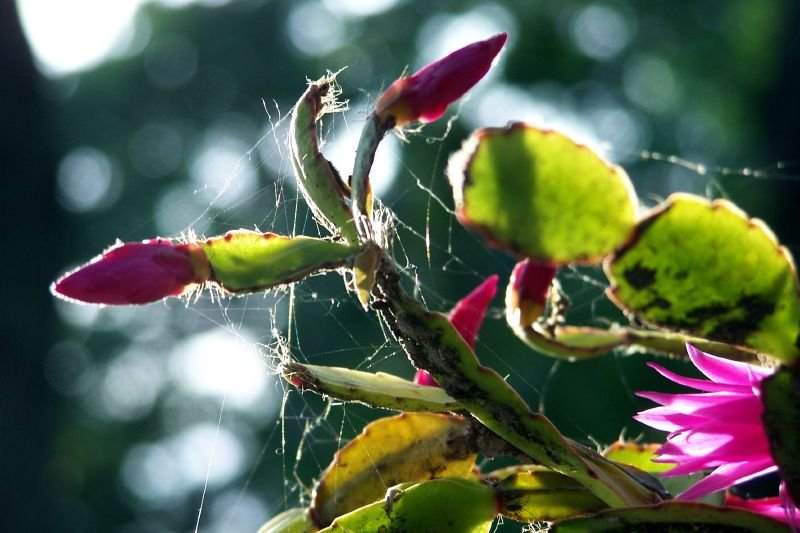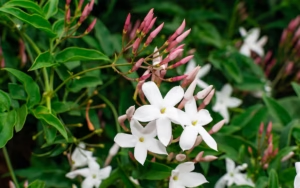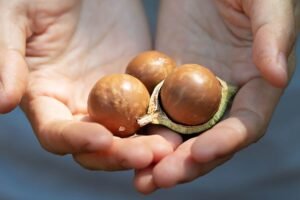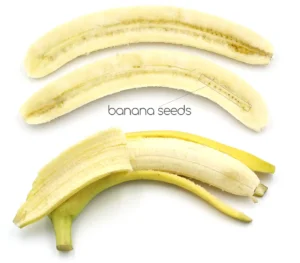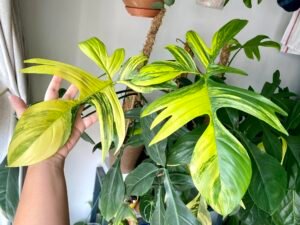The Christmas cactus is a beloved houseplant known for its vibrant blooms and unique appearance. However, like any plant, it can encounter problems. Whether you’re a seasoned gardener or a beginner, understanding these issues and addressing them promptly will keep your Christmas cactus healthy and thriving. Here’s a detailed guide to common Christmas cactus problems and how to fix them fast.
Drooping or Limp Leaves
What Causes Drooping Leaves?
Drooping or limp leaves on a Christmas cactus are often a sign of stress. This can result from several factors, such as:
- Overwatering: When the soil remains too wet, it can suffocate the roots, leading to leaf droop.
- Underwatering: A lack of water can cause the plant to dehydrate, making the leaves limp.
- Temperature Stress: Christmas cacti are sensitive to sudden temperature changes or drafts.
- Nutrient Deficiency: Inadequate nutrients can weaken the plant, affecting leaf health.
How to Fix It
- Check the Soil: Test the top 2 inches of soil for dryness before watering. Overly damp soil may indicate overwatering.
- Adjust Watering: Water deeply but infrequently, ensuring excess water drains out of the pot. Watering every 2-3 weeks is usually sufficient during non-growing seasons.
- Relocate the Plant: Move the cactus to a spot with stable temperatures, away from drafty windows, air conditioning vents, or heaters.
- Feed the Plant: Use a balanced, water-soluble fertilizer diluted to half strength during the growing season to replenish nutrients.
Pro Tip:
For best results, mimic the natural environment of the Christmas cactus by keeping humidity levels moderate and avoiding extreme conditions.
Root Rot
What is Root Rot?
Root rot occurs when the roots are submerged in water for extended periods, leading to fungal growth. It’s one of the most common problems with Christmas cacti.
Signs of Root Rot
- Yellowing or browning leaves
- A foul smell from the soil
- Mushy or blackened roots
- Drooping or collapsing stems
How to Fix It
- Inspect the Roots: Carefully remove the plant from its pot and examine the roots. Healthy roots should be white and firm.
- Trim the Rot: Use sterilized scissors or pruning shears to cut away any mushy or discolored roots. Discard the infected soil.
- Repot: Choose a pot with drainage holes and use fresh, well-draining cactus soil. Add perlite or sand to improve aeration if necessary.
- Water Properly: Allow the top inch of soil to dry out between waterings. Avoid letting the pot sit in a saucer of water.
Pro Tip:
If your Christmas cactus is prone to root rot, consider using a terracotta pot. Its porous nature helps wick away excess moisture.
Mushy Leaves
Causes of Mushy Leaves
Mushy leaves are usually caused by overwatering or exposure to cold temperatures. The plant may struggle to absorb nutrients properly, leading to decay.
How to Fix It
- Limit Watering: Reduce the frequency of watering, especially during cooler months when the plant’s water needs decrease.
- Provide a Stable Environment: Keep the plant in a warm spot with indirect sunlight, ideally between 60-70°F (15-21°C).
- Remove Damaged Leaves: Trim away mushy or decayed leaves using sterilized scissors to prevent further spread of disease.
- Inspect the Soil: Ensure the soil is well-draining and not compacted. Replace it if necessary to improve drainage.
Pro Tip:
Avoid placing your Christmas cactus near drafty windows or in areas where it might encounter sudden temperature drops.
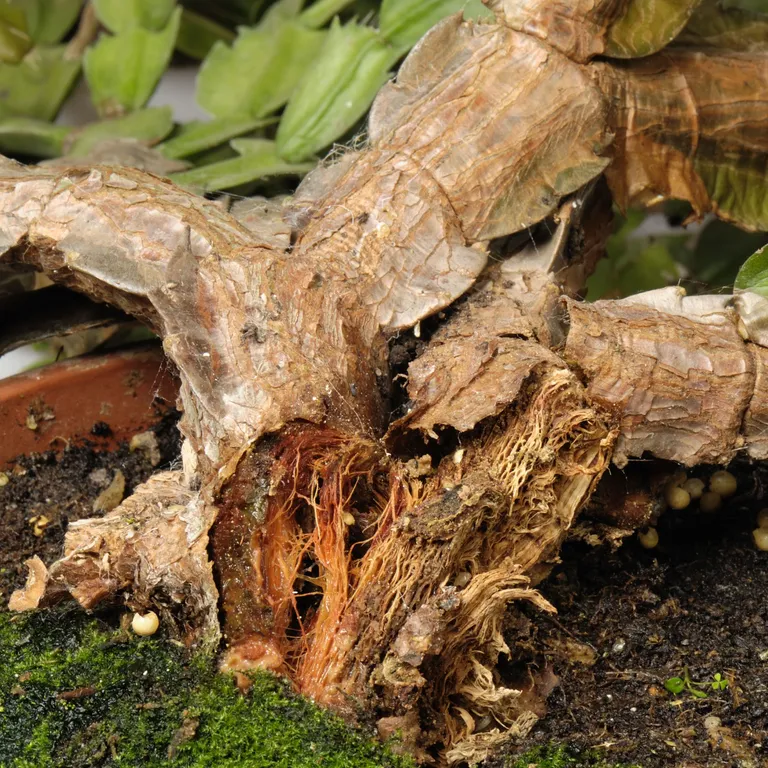
Yellowing Leaves
Why Do Leaves Turn Yellow?
Yellowing leaves often indicate one or more of the following:
- Overwatering: Consistently wet soil can lead to nutrient deficiencies and root damage.
- Nutrient Imbalance: Lack of essential nutrients like magnesium or nitrogen can cause yellowing.
- Pests: Infestations of spider mites, mealybugs, or scale insects can damage the leaves.
How to Fix It
- Inspect for Pests: Check both sides of the leaves and stems for small insects or webbing. Treat infestations with insecticidal soap or neem oil.
- Adjust Nutrients: Use a balanced fertilizer formulated for succulents to address deficiencies. Epsom salt (magnesium sulfate) can help if the plant lacks magnesium.
- Water Mindfully: Stick to a consistent watering schedule and ensure proper drainage to prevent overwatering.
Pro Tip:
Rotate your plant periodically to ensure even exposure to light, which can help prevent uneven leaf coloration.
Flower Bud Drop
Why Does This Happen?
It can be heartbreaking to see buds fall off before they bloom. Common causes include:
- Stress: Sudden changes in light, temperature, or watering habits can shock the plant.
- Overwatering or Underwatering: Inconsistent watering disrupts the plant’s hydration balance.
- Insufficient Light: Poor lighting conditions can hinder bud development.
How to Fix It
- Maintain Consistency: Avoid moving the plant frequently and keep conditions stable.
- Provide Adequate Light: Place the cactus in bright, indirect light to support healthy bud formation.
- Water Properly: Keep the soil slightly moist but not soggy. Reduce watering when buds are forming to prevent drop.
Pro Tip:
During the pre-bloom phase, ensure the plant gets 12-14 hours of darkness at night to encourage flowering.
Brown, Wrinkled Leaves
Causes of Wrinkled Leaves
Brown, wrinkled leaves usually indicate dehydration, excessive heat exposure, or prolonged neglect.
How to Fix It
- Water Regularly: If the soil is extremely dry, water the plant deeply and let it drain thoroughly.
- Increase Humidity: Use a humidifier, place a tray of water near the plant, or mist it occasionally to maintain moisture.
- Relocate to a Cooler Spot: Avoid placing the plant near heaters, radiators, or direct sunlight that could cause heat stress.
Pro Tip:
Incorporate a pebble tray beneath the pot to increase humidity without waterlogging the roots.
Wilting or Droopy Stems
Why Do Stems Wilt?
Wilting stems can occur due to:
- Overwatering or Underwatering: Both extremes can cause the stems to lose turgidity.
- Poor Soil Drainage: Compacted or waterlogged soil can suffocate the roots.
- Root Damage: Injured or rotting roots disrupt water and nutrient uptake.
How to Fix It
- Reassess Watering Practices: Strike a balance by letting the top inch of soil dry out before watering.
- Use Proper Soil: A cactus mix with added sand or perlite improves drainage.
- Support the Stems: Use stakes or ties to prop up droopy stems until the plant regains strength.
Pro Tip:
Regularly check the bottom of the pot for standing water or clogs that may cause drainage issues.
Leaf Discolorations
What Causes Discoloration?
Leaves may develop spots or unusual colors due to:
- Pests: Insects can cause stippling, spots, or discoloration.
- Sunburn: Excessive direct sunlight can scorch the leaves.
- Fungal Infections: High humidity or poor ventilation fosters fungal growth.
How to Fix It
- Inspect the Plant: Look for signs of pests or fungal infections. Use a magnifying glass if needed.
- Adjust Light Levels: Move the plant to a spot with bright, indirect light to prevent sunburn.
- Treat with Fungicide: Apply a fungicide to combat fungal infections and prevent further damage.
Pro Tip:
Always water at the base of the plant rather than misting the leaves to reduce the risk of fungal infections.
Grey Mold
What is Grey Mold?
Grey mold is a fungal disease caused by excessive moisture and poor air circulation. It often appears as fuzzy, grey patches on the leaves or stems.
How to Fix It
- Remove Affected Parts: Trim away any moldy areas using sterilized tools.
- Improve Airflow: Place the plant in a well-ventilated area to reduce humidity.
- Use Fungicide: Apply a houseplant-safe fungicide to protect the healthy parts of the plant.
- Monitor Watering: Water sparingly and avoid wetting the foliage.
Pro Tip:
Space your Christmas cactus away from other plants to prevent the mold from spreading.
Lack of Growth
Why Isn’t My Christmas Cactus Growing?
A Christmas cactus that isn’t growing may be struggling due to:
- Improper Light: Insufficient or overly intense light can hinder growth.
- Nutrient Deficiency: A lack of essential nutrients may stunt the plant’s development.
- Temperature Stress: Extreme cold or heat can slow down the cactus’s natural growth cycle.
- Root Bound: If the roots outgrow the pot, the plant may struggle to absorb nutrients and water effectively.
How to Fix It
- Adjust Lighting: Provide bright, indirect sunlight for at least 8-10 hours a day. Avoid direct sunlight, which can scorch the plant.
- Fertilize Appropriately: During the growing season (spring to summer), use a cactus fertilizer every 4-6 weeks. Ensure it contains nitrogen, phosphorus, and potassium for balanced growth.
- Repot if Necessary: If the plant has become root-bound, repot it into a slightly larger container using fresh cactus soil.
- Maintain Optimal Temperatures: Keep the plant in a stable environment between 60-70°F (15-21°C) to encourage healthy growth.
Pro Tip:
Regularly clean the leaves with a damp cloth to remove dust, allowing the plant to photosynthesize effectively.
Lack of Blooms
Why Isn’t My Christmas Cactus Blooming?
The Christmas cactus is treasured for its beautiful blooms, so it’s disappointing when it doesn’t flower. Common causes include:
- Incorrect Light Cycles: The plant requires specific light and dark periods to bloom.
- Temperature Issues: Warm temperatures during the budding phase can inhibit flowering.
- Nutrient Imbalance: Too much nitrogen can encourage leaf growth at the expense of blooms.
- Stress: Transplanting, moving the plant, or irregular watering can disrupt the blooming cycle.
How to Fix It
- Create a Blooming Environment: Provide 12-14 hours of complete darkness each night for about 6 weeks in the fall to stimulate bud formation.
- Cool the Temperature: Maintain nighttime temperatures between 50-55°F (10-13°C) to encourage blooming.
- Use a Phosphorus-Rich Fertilizer: Fertilizers high in phosphorus help promote flower production. Start feeding about a month before the blooming season.
- Avoid Moving the Plant: Once buds form, keep the plant in a stable location to prevent stress.
Pro Tip:
Prune the plant after blooming by trimming the stems to encourage fuller growth and more flowers in the next cycle.
FAQ
What are the signs of overwatering a Christmas cactus?
Overwatering often manifests as:
- Yellow, mushy leaves
- Root rot (black or mushy roots)
- Foul smell from the soil
- Wilting or collapsing stems
To avoid overwatering, let the soil dry out between waterings and always use a pot with proper drainage.
What does a stressed Christmas cactus look like?
A stressed Christmas cactus may exhibit:
- Drooping or wilting leaves
- Brown or yellow discoloration
- Bud or flower drop
- Wrinkled, dehydrated leaves
Identify the source of stress, such as improper light, watering, or temperature, and address it promptly.
How often should you water your Christmas cactus?
Watering frequency depends on the season:
- During active growth (spring/summer): Water every 1-2 weeks, ensuring the soil dries out between waterings.
- During dormancy (fall/winter): Water sparingly, about every 3-4 weeks, or when the soil feels dry to the touch.
Can you use coffee grounds for a Christmas cactus?
Yes, coffee grounds can be beneficial for Christmas cacti as they:
- Add organic material to the soil
- Provide nitrogen, which promotes healthy growth
However, use coffee grounds sparingly and mix them with compost or soil to prevent over-acidifying the soil.
Read also: https://techcrunchs.net/how-to-grow-and-care-dracaena-plant/
Read also: https://techcrunchs.net/how-to-grow-amaryllis-a-complete-guide/

